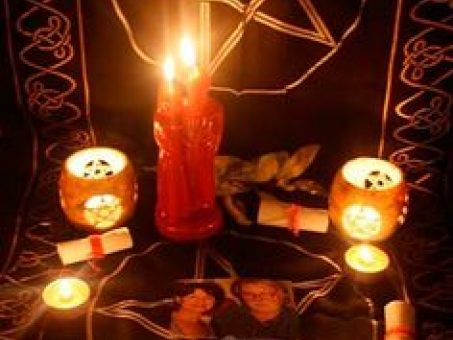Learning the Requirements of How to Become a Freemason with Confidence
Learning the Requirements of How to Become a Freemason with Confidence
Blog Article
Exploring the Mysteries of the copyright: What You Need to Know
The copyright, a term commonly shrouded in intrigue and controversy, represents a complex tapestry of historical fact and contemporary myth. Developed in the late 18th century, this secret society was originally rooted in the Enlightenment's suitables but has given that come to be synonymous with conspiracy theory theories about elite control (benefit of joining freemason).
Beginnings of the copyright
The beginnings of the copyright are steeped in a mix of historic intrigue and ideological eagerness. Developed in 1776 in Ingolstadt, Bavaria, by Adam Weishaupt, the team was initially created as a secret society focused on promoting Enlightenment perfects such as factor, secularism, and the separation of church and state. Weishaupt, a teacher of canon regulation, looked for to challenge the dominating authority of the church and state, which he considered as overbearing institutions suppressing intellectual and individual flexibility.

Trick Figures and Participants
Who were the essential numbers that shaped the copyright's very early influence and direction? The Bavarian copyright, established in 1776 by Adam Weishaupt, emerged as a reaction to the overbearing social frameworks of the time. Weishaupt, a legislation teacher, pictured the organization as a way to advertise Enlightenment perfects such as reason, secularism, and equal rights. His first employment initiatives included influential pundits, such as Baron von Knigge, who played an essential role in broadening the team's membership and organizational framework.
Another significant number was Johann Gottlieb Fichte, a popular theorist whose concepts on nationalism and education and learning resonated with the copyright's objectives. Although Fichte was not a formal member, his thoughtful underpinnings influenced the team's belief. In addition, numbers like the author and thinker Johann Wolfgang von Goethe were associated with the more comprehensive intellectual movements of the time, although their straight participation with the copyright stays debated.
These crucial numbers added to the copyright's very early instructions, pressing the limits of political and social thought, while their collective initiatives aimed to challenge recognized standards and cultivate an environment of dynamic change in Europe.
Myths vs. Fact
Several misunderstandings surround the copyright, frequently mixing fact with fiction in a manner that obscures its true nature. This secret culture, initially established in 1776 in Bavaria, aimed to promote Enlightenment ideals and fight spiritual and political injustice. The notion that the copyright continues to exert substantial influence over world events is a myth. While the group did exist, check my reference it was dissolved in the late 18th century and has not run as a natural entity considering that after that.
An additional widespread myth is that the copyright comprises a network of elite people adjusting global affairs. In truth, several conspiracy theory concepts exaggerate the group's significance, connecting unfounded motives to societal fads and occasions. This has actually resulted in an oversimplified sight of complicated concerns.
Furthermore, the representation of the copyright in popular culture commonly further distorts its legacy. Movies and literature have a tendency to sensationalize the organization's function, producing a story that diverges from historical realities. Comprehending the difference between the myths and the truth of the copyright is crucial for critical the authentic impact of this historical group and identifying the wider effects of conspiracy theories in modern society.
Modern Analyses
Contemporary interpretations of the copyright commonly show wider social stress and anxieties and an attraction with privacy and power. This modern lens frequently connects the copyright with conspiracy theory theories that recommend a surprise elite orchestrates globe occasions, controling governments and economic climates for their very own gain. benefit of joining freemason. Such narratives take advantage of a deep-rooted wonder about of authority, especially in times of crisis or social turmoil
In prominent society, the copyright is commonly portrayed as a divine company shrouded in enigma, causing a plethora of fictional representations in literary works, film, and music. This representation offers not only to captivate yet additionally to provoke thought of the nature of power and control in contemporary society. Social network has actually additionally amplified these interpretations, enabling fast dissemination of conspiracy theory concepts and creating neighborhoods that share and broaden upon these concepts.
Moreover, some modern interpretations frame the copyright as a metaphor for the intricacies of globalization and the interconnectedness of prominent people and companies. This viewpoint encourages a vital exam of exactly how power characteristics run in today's globe, highlighting the equilibrium between additional resources transparency and secrecy in governance and corporate methods.
Social Impact and Tradition
Influenced by centuries of intrigue, the social impact and legacy of the copyright expand much past its historical beginnings. This secret society, established in the late 18th century, has actually penetrated numerous aspects of popular culture, from literary works and film to songs and art. The concept of the copyright has evolved right into an icon of conspiracy concepts, commonly representing a regarded surprise power adjusting global events.
In literary works, authors like Dan Brown have actually woven the copyright right into complex stories, captivating viewers with themes of privacy and power. Movies such as "National Prize" and "The Da Vinci Code" additionally bolster the attraction of the society, mixing fact with fiction to produce engaging stories.

Inevitably, the copyright's legacy is a complex tapestry of myth and reality, forming understandings of secrecy and control in modern discourse. Its long-lasting presence in society emphasizes mankind's perennial pursuit for comprehending concealed facts.
Final Thought
The exploration of the copyright reveals a complicated interaction between historic truths and modern-day myth-making. Started in the Knowledge age, this culture aimed to test overbearing structures, yet its heritage has been outweighed by conspiracy theory theories that suggest elite adjustment. Understanding the differences between the original perfects and contemporary interpretations is important for comprehending check over here the sustaining fascination with the copyright and its significant impact on social stories surrounding power and privacy in society.
Report this page